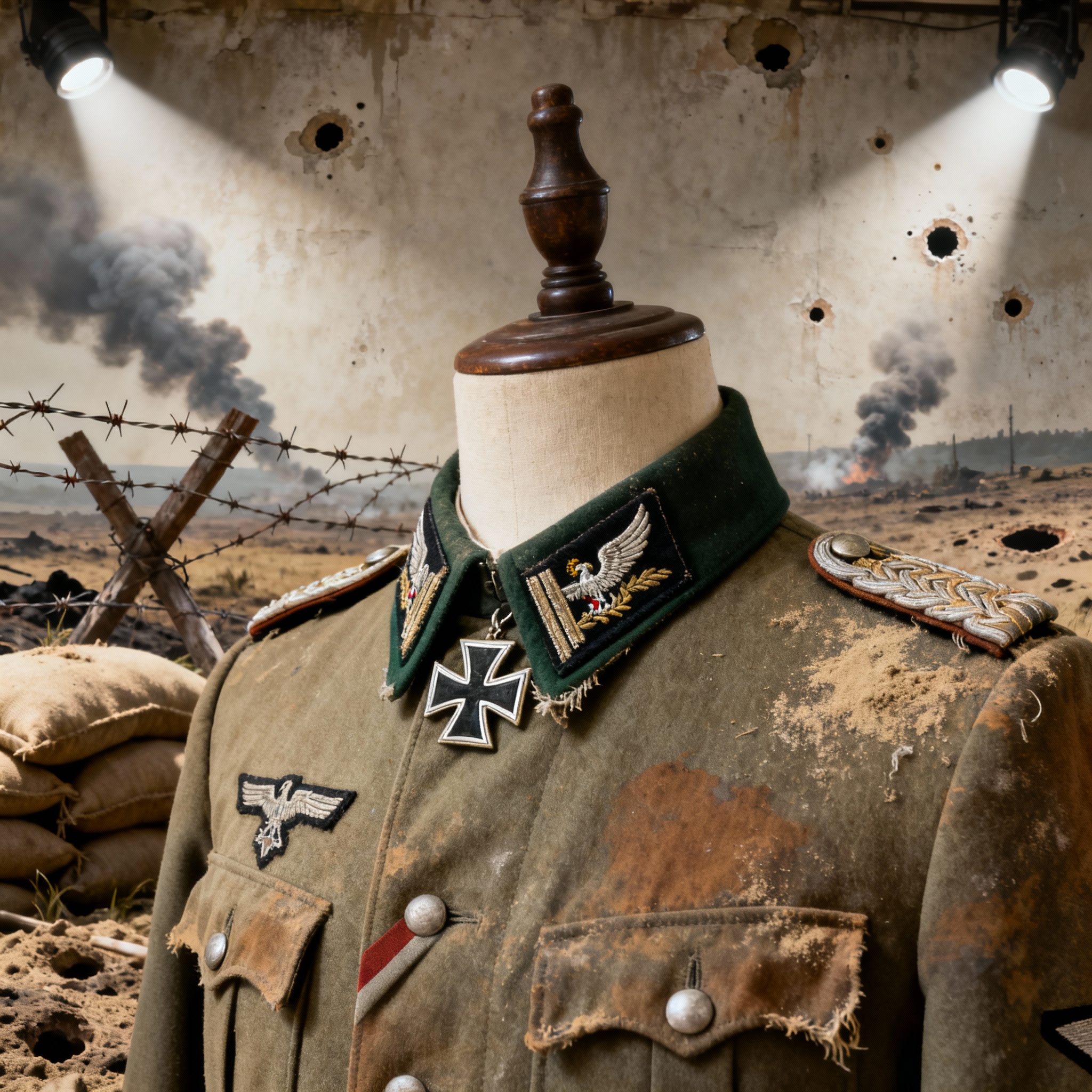
World War 1 German Uniforms: A Complete Guide for History and War Collectors
Published on Oct 01, 2025
World War 1 German Uniforms: A Complete Guide for History and War Collectors
Meta Title: World War 1 German Uniforms – History, Styles & Collector’s Guide
Meta Description: Discover World War 1 German uniforms, officer styles, field caps & Afrikakorps gear—actionable tips for collectors & reenactors.
Meta Keywords: World War 1 German uniforms, German WW1 costume, World War 1 German officer uniforms, WW1 German field cap, Afrika Korps uniform
Introduction: Why World War 1 German Uniforms Still Fascinate Collectors
Did you know that nearly 53% of online searches related to German uniforms are informational in intent, while 43% are commercial and 4% transactional? This means most people aren’t just buying – they’re learning, comparing, and planning before making decisions.
If you’re interested in World War 1 German uniforms, you’re not alone. Collectors, reenactors, and history enthusiasts continue to study these iconic pieces of military heritage. From the practical WW1 German field cap to the striking World War 1 German officer uniforms, these garments tell stories of technology, hierarchy, and survival.
In this guide, we’ll explore actionable steps for collectors and reenactors, common pitfalls to avoid, and trends shaping the world of historical uniforms.
World War 1 German Uniforms: An Overview
German soldiers during WW1 were issued practical yet distinct uniforms. The famous feldgrau (field grey) wool set the standard, designed to blend into Europe’s muddy battlefields. But not all uniforms were the same.
Key Components
- Tunic (M1907/10 or M1915 Bluse): Streamlined, with fewer bright details than earlier versions.
- Trousers: wool, usually in grey or field green.
- WW1 German Field Cap (Feldmütze): Soft cap with red piping, often worn in place of helmets when off duty.
- Pickelhaube (Spiked Helmet): Iconic early-war headgear, later replaced by the steel Stahlhelm.
Officer Variants
The World War 1 German officer uniforms were made from higher-quality materials, with tailored fits and insignia that marked rank. Officers often had custom orders, leading to unique variations.
Actionable Steps for Collectors
If you’re looking to build a collection of German uniforms, here’s where to start:
1. Do Your Research
- Learn the difference between originals, reproductions, and replicas.
- Study photos, museum pieces, and reliable history books.
2. Start with Common Pieces
- Begin with a WW1 German field cap or tunic before chasing rare officer uniforms.
- Reproduction German WW1 costume sets are affordable entry points.
3. Verify Authenticity
- Check stitching, fabric weight, and insignia placement.
- Be cautious: fakes are common in online markets.
4. Network with Experts
- Join forums, reenactment groups, or historical associations.
- Attend militaria shows where you can see and handle real pieces.
Common Pitfalls to Avoid
Even experienced collectors make mistakes. Here are the most common traps:
- Confusing WW1 with WW2 Gear: While some features look similar, details like helmet shape and insignia differ.
- Paying Too Much for Reproductions: Many sellers list replica uniforms at original prices.
- Neglecting Preservation: Wool uniforms require special storage to avoid moth damage.
- Ignoring Provenance: Always ask for documentation when buying rare pieces.
Trends in Collecting and Reenactment
Interest in German uniforms is shifting with time:
Rise of Reenactments
More enthusiasts are buying German WW1 costume reproductions for living history events.
Afrika Korps Uniform Popularity
Although from WW2, the Afrika Korps uniform has grown popular among collectors because of its distinct khaki look and connection to desert campaigns.
Digital Research
Collectors increasingly rely on online auctions, military history blogs, and virtual museums.
Sustainability and Replica Growth
High-quality replicas let beginners enjoy history without risking damage to authentic, fragile garments.
World War 1 German Uniforms in Modern Use
- Museums & Education: Authentic uniforms remain valuable teaching tools.
- Film & Media: Movies and documentaries use both originals and replicas.
- Reenactment & Hobby: Collectors often recreate full kits to understand soldier life better.
Practical Tips for Caring for Your Uniforms
- Storage: Use breathable garment bags. Avoid plastic.
- Cleaning: Never machine-wash; use a professional textile conservator.
- Display: Avoid direct sunlight, which fades wool.
- Documentation: Keep a record of where and when you obtained each item.
World War 1 German Uniforms: Final Thoughts
Whether you’re a beginner looking for your first German WW1 costume or a seasoned collector chasing an authentic World War 1 German officer uniform, there’s always more to discover.
The key is balance: learn before you buy, connect with fellow enthusiasts, and take care of what you collect. The history woven into each tunic, cap, and insignia deserves to be preserved.
